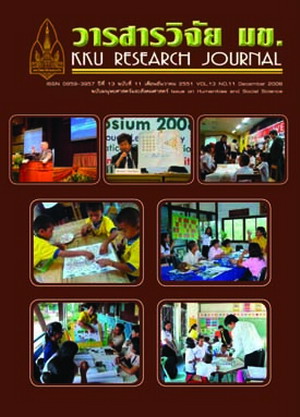The state of teaching and learning science according to basic science curriculum reform in Thailand
Main Article Content
Abstract
The objective was to study the state of teaching and learning science under the basic science curriculum reform based on the perceptions of science teachers, their students and science educators. The subjects from this research survey were selected by using a stratified random sampling of 225 science teachers, 2,250 students, and 256 science educators. The instruments used included three questionnaires. The statistics used were descriptive statistics. The results show that the state of teaching and learning science is in line with science curriculum reform at a certain level. Some science teachers taught according to the IPST Basic Science Curriculum that encouraged students to experience knowledge and processes and to develop their reasoning, critical thinking and creative thinking skills. Teachers were encouraged to use different types of materials corresponding to the IPST Basic Science Curriculum, and to use various methods to determine the results of student learning from the learning activities. The majority of students worked in small groups and worked on science projects once in a while, used notes and worksheets prepared by the teachers, and used resources from internet websites and science textbooks. Students perceived that teachers gave a great deal of weight to standardized, objective, and subjective tests and the assessment information gathered. The science educators agreed and disagreed with the teachersÕ and studentsû perceptions. However, most science teachers and science educators agreed that the important factors that affect science learning in science classes are uninterested students, a shortage of instructional equipment, and a high student / teacher ratio.
Article Details
How to Cite
Roadrangka, V., Yutakom, N., & Chaiso, P. (2017). The state of teaching and learning science according to basic science curriculum reform in Thailand. Asia-Pacific Journal of Science and Technology, 13(11), 1217–1235. Retrieved from https://so01.tci-thaijo.org/index.php/APST/article/view/83468
Section
Research Articles

